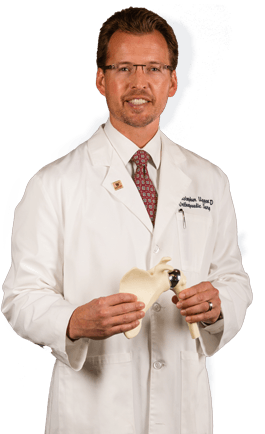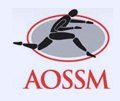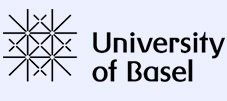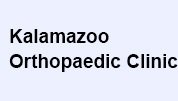Labrum Tear (SLAP, Bankart)
SLAP Tears
The shoulder joint is a ball and socket joint. A 'ball' at the top of the upper arm bone (the humerus) fits neatly into a 'socket', called the glenoid, which is part of the shoulder blade (scapula). The term SLAP (superior –labrum anterior-posterior) lesion or SLAP tear refers to an injury of the superior labrum of the shoulder. The labrum is a ring of fibrous cartilage surrounding the glenoid for stabilization of the shoulder joint. The biceps tendon attaches inside the shoulder joint at the superior labrum of the shoulder joint. The biceps tendon is a long cord-like structure which attaches the biceps muscle to the shoulder and helps to stabilize the joint.
Causes
The most common causes include falling on an outstretched arm, repetitive overhead actions such as throwing, and lifting a heavy object. Overhead and contact sports may put you at a greater risk of developing SLAP tears.
Symptoms
The most common symptom is pain at the top of the shoulder joint. In addition, catching sensation and pain most often with activities such as throwing may also occur.
Diagnosis
Diagnosis is made based on the symptoms, physical examination, Xrays, and MRI.
Treatment
Asymptomatic SLAP tears are commonly found on MRIs of high level throwing athletes; therefore, initial treatment often includes anti-inflammatory medications and physical therapy to restore motion and strengthen the rotator cuff and shoulder blade stabilizers. In patients who continue to have pain and disability in spite of nonoperative treatment, arthroscopic surgery of the shoulder may be recommended. Depending on the severity of the lesion, SLAP tears may require debridement or some may need to be repaired. A SLAP repair can be done using arthroscopic techniques that require only two or three small incisions. After surgery, patients wear a sling for six weeks and then do physical therapy to recondition the shoulder. Return to full activities is often 5-6 months after surgery.
Bankart Tear
The shoulder joint (glenohumeral joint) is a ball and socket joint, where the head of the upper arm bone (humerus) attaches to the shoulder socket (glenoid cavity). The shoulder socket is extremely shallow and therefore needs additional support to keep the ball from dislocating. The labrum, a cuff of cartilage that encircles the shoulder socket, helps serve this purpose by forming a cup for the humeral head to move within. It provides stability to the joint, enabling a wide range of movements.
The labrum can sometimes tear during a shoulder injury. A specific type of labral tear that occurs when the shoulder dislocates is called a Bankart tear. This is a tear to a part of the labrum called the inferior glenohumeral ligament and is common in younger patients who sustain a dislocation of the shoulder. A Bankart tear makes the shoulder prone to repeat dislocation in patients under 30 years of age.
How is a Bankart tear diagnosed?
Your physician will ask about your medical history and perform a thorough physical examination of your shoulder. Your doctor may recommend additional X-rays and an MRI.
What are the treatment options?
Nonoperative treatment measures for a bankart tear include rest and immobilization with a sling followed by physical therapy to strengthen the rotator cuff and shoulder blade stabilizers.
Bankart repair surgery is indicated for a bankart tear when patients have recurrent shoulder instability in spite of nonoperative treatment.
How is the procedure performed?
Bankart surgery can be performed using an open surgical technique or a minimally invasive surgical technique known as arthroscopy.
Open Surgery
You will be placed in a chair inclined at a 30-degree angle with your arm positioned freely over the end of the operating table.
Your surgeon makes a long incision over the shoulder joint and cuts through the soft tissues in order to gain access to the interior of the joint. Retractors are used to hold the tissue apart so the surgeon can view the detachment of the labrum from the glenoid socket. Small holes are drilled through the edge of the glenoid socket and anchors are inserted into the area of the tear. These anchors have suture threads attached to them. These suture threads are then passed through the holes to reattach the torn labrum securely to the joint capsule. At the end of the procedure, the incision is closed and dressings are applied.
Arthroscopic Procedure
During an arthroscopic Bankart procedure, your surgeon makes a few small incisions over your shoulder joint. An arthroscope, a slender tubular device attached with a light and a small video camera at the end, is inserted through one of the incisions into your shoulder joint. The video camera transmits the image of the inside of your shoulder joint onto a television monitor for your surgeon to view. Your surgeon then uses small surgical instruments through the other tiny incisions to mobilize the scar tissue. Suture anchors are then inserted to reattach the detached labrum to the glenoid and tighten the capsule. The tiny incisions are then closed and covered with a bandage.
Arthroscopy causes minimal disruption to the other shoulder structures and does not require your surgeon to detach and reattach the overlying shoulder muscle (subscapularis) as with the open technique.
What are the steps recommended for post-operative care?
- After your surgery, you will spend about an hour in the recovery room.
- A sling is worn for six weeks and simple home exercises are performed.
- Physical therapy starts six weeks after your surgery to strengthen and improve the range of motion of your shoulder joint.
- You will be allowed to perform your daily activities as much as your tolerance level allows, but without lifting objects heavier than a glass while healing takes place.
- You may resume light low-risk activities 12 weeks after surgery.
- Return to full activities is often 5-6 months after surgery.
What are the associated risks and complications?
Bankart repair is a relatively safe procedure, but as with any surgical procedure, potential risks and complications may occur. Some of the potential risks include:
- Infection
- Injury to adjacent nerves or blood vessels
- Stiffness of the joint
- Pain
- Recurrent instability
- Need for additional surgeries













